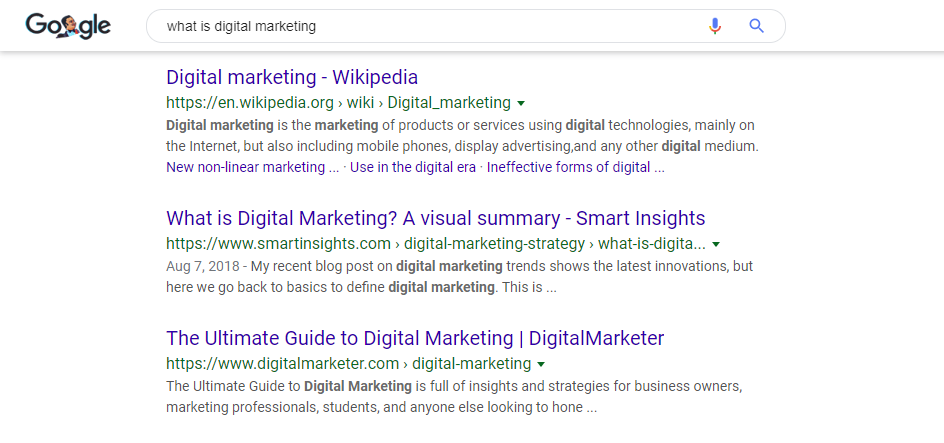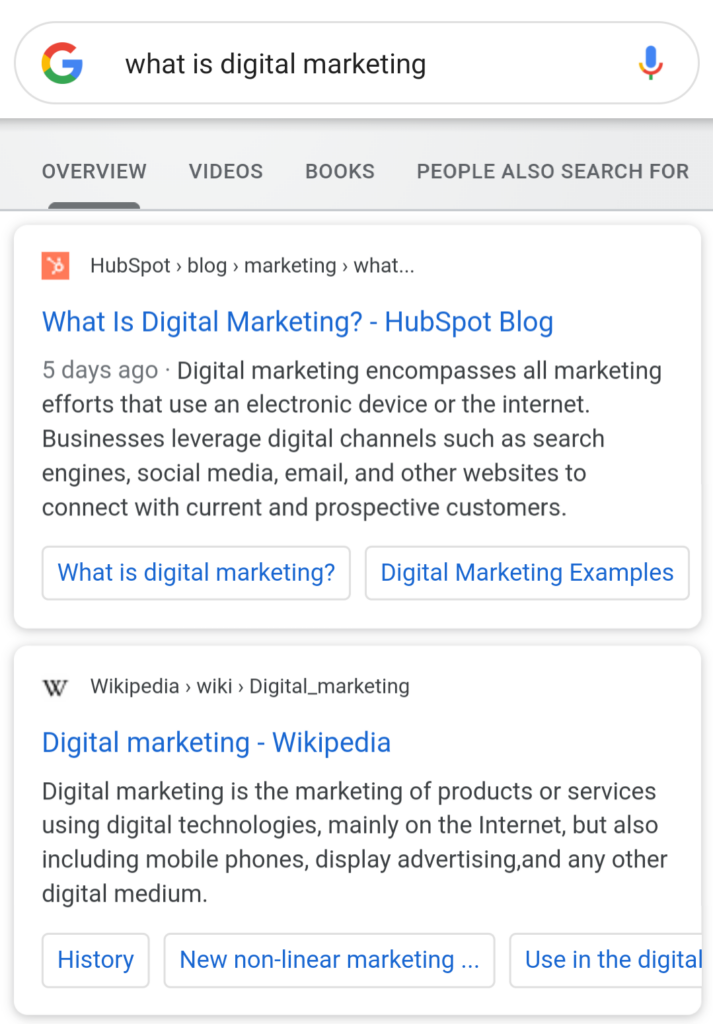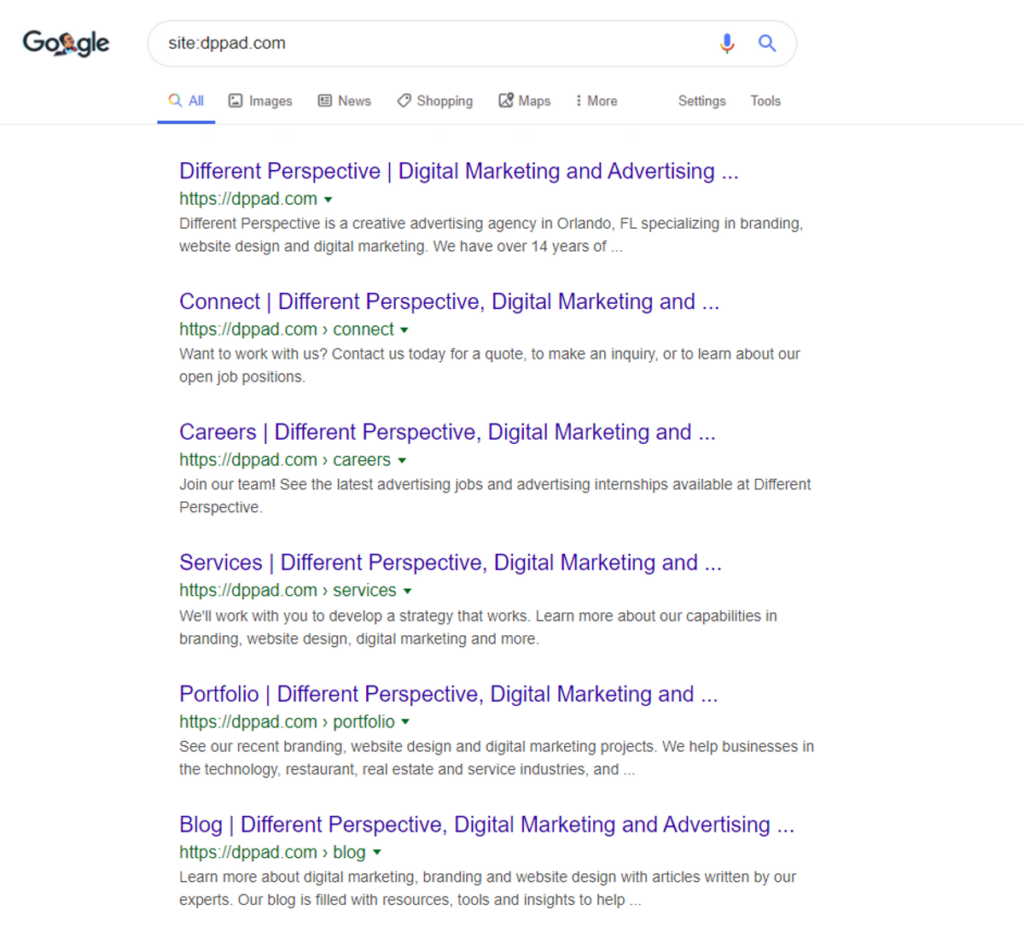5-Minute Fix: How to write the perfect meta description
Learn how you can drive more traffic to your website with this often overlooked feature
You’ve spent hours crafting the perfect content, choosing the right images, and publishing it on your beautifully designed website—now what?
If you’re not using meta descriptions, you’re missing a trick!
As an important part of on-page SEO, meta descriptions can be your secret weapon to entice people to click on your content and to drive more traffic to your website.
Keep reading as we walk you through how they work, and learn how to write the perfect meta description.
What is a meta description?
A meta description is a small snippet of text that you can add when publishing or updating a page on your website.
While it’s not visible on the web page itself, Google and other online search engines will show it in search results below the page title and the link.
When displayed on a search results page like this, the meta description text is known as a “search snippet”.


Here’s an example of how search snippets look on desktop:
And on mobile:
The meta description will also often appear when people share your articles across other websites and social channels.

Here’s an example of how a meta description looks on our Twitter page:
Think of a meta description as a synopsis of what your web page is about. Every page on your website—blog pages, About Us, Services, Products, and so on—should have one.
Why is a meta description important?
While meta descriptions are not direct ranking signals—meaning that Google and other search engines do not take them into account when deciding where to rank your web page in search results—they’re still incredibly important.
According to Google:
Good meta descriptions are short blurbs that describe accurately the content of the page. They are like a pitch that convince the user that the page is exactly what they’re looking for. [1]
The right meta description will help your content stand out from everything else on the search results page, and will entice searchers to click through to your website.
If you don’t specify your own meta description, the search engine will instead pull relevant parts of your page’s content to feature in the search snippet. This may also happen if your meta description is of poor quality, doesn’t match the content of the page, or doesn’t closely match the search query.
Writing your own meta description gives you control over the text Google and other search engines show to the searcher—so use it to entice people to click your result to learn more.
How to write the perfect meta description
The good news is it’s not hard to write a great meta description! There are four important things to bear in mind:
#1: Character limit
When writing a meta description, we advise you keep it between 150–160 characters. This is because Google and other search engines usually truncate snippets that are longer than 160 characters.
While this can vary depending on the search, the device the searcher is using, and search engine algorithm updates, it’s a good rule of thumb to keep in mind.
#2: Relevancy
Your meta description should accurately describe the content of your web page. Make sure it expands on the page title, and be sure to include the most important keywords for the page—that is, the search terms you hope your content will show up for.
#3: Use a different meta description for every page
The content on each of your web pages is different, so it makes sense that your meta descriptions should be different, too.
Search engines may even penalize you for duplicating meta descriptions across different pages of content.
#4: Entice people to click
Your meta description is your opportunity to attract searchers to your website. Think about why they should click: what’s the benefit for them if they read your content?
Your meta description should be appealing and persuasive, but shouldn’t read like an ad or sound spammy. While you should include your most important keywords, be careful not to “keyword stuff” your meta description by adding more keywords than necessary.
Instead, use natural language that hooks the reader and invites them to your web page to learn more.

Here are some examples of the meta descriptions we use on our website:
Our advice: plan ahead when you’re creating or updating content for your website by bearing the meta description in mind when you’re writing.
Make sure your meta description succinctly sums up when your web page is about and uses enticing language to encourage people to click.
Read more: No more bad blogs! 5 ways to keep your content fresh
Need help with how to write the perfect meta description?
At Different Perspective, we have over 15 years of experience helping businesses like yours engage with customers, reinforce their expertise and increase conversion rates with a proven content creation strategy.
Ready to get started?
Contact us today to learn more.
Read more:
How social media can boost your SEO efforts
10 signs your website needs an update
Hiring an advertising agency vs. doing it yourself
Sources:



 Back to all blogs
Back to all blogs